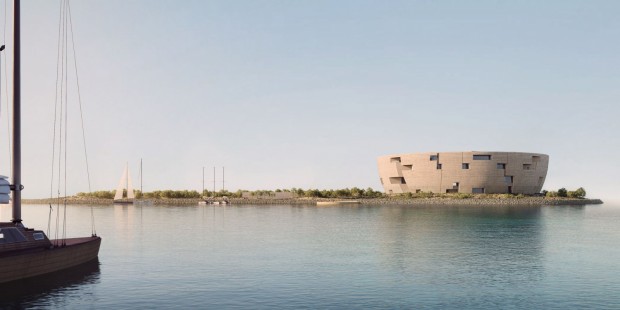Swiss architects will be in charge of constructing the Lusail Museum in Qatar, which will be built for five years. The story of the man who founded Qatar served as an inspiration for the design of the thirty-meter-tall building.

(Photo : Milmet/Herzog & de Meuron )
Lusail Museum's Design
The construction of the New Lusail Museum, situated on Al Maha Island in Lusail, just north of Doha, is scheduled to commence shortly and is anticipated to be finished in 2029. The architectural company Herzog & de Meuron was awarded the Pritzker Prize and was responsible for its design.
As mentioned, the height of the museum will be thirty meters, and it will be divided into five levels. Areas for art exhibitions and a 'think tank' space for talks on global issues will be included in the project, which will have a footprint of 11,000 square meters on a site that is more significant than 100,000 square meters.
Moreover, the story of Sheikh Jassim bin Mohamed bin Thani, the founder of Qatar, who resided in Lusail, will be a central theme in the museum's design. According to the architect Jacques Herzog, a significant portion of the museum's design is influenced by the culture and architecture of Muslims and the area surrounding the museum. While constructing the structure, he notes that the crescent form, prevalent in Islamic culture, was a significant factor. A crescent-shaped 'boulevard' will reportedly serve as the interior walkway for museum visitors.
Also Read: Netherlands Faces Potential Severe Housing Crisis if New Construction is Not Undertaken This Year
Sustainability of the Museum
A ceremony that commemorated the beginning of construction on the museum's site took place in December of last year. Recent developments have also resulted in publishing new renderings of the structure. By constructing the edifice primarily from locally sourced materials, the museum signifies its intention to establish a connection with the surrounding land and addresses environmental considerations.
As per architect Herzog, their goal is to accomplish something that does not require you to import all there is to import. The company also wants to make this structure a contribution as far as the environment is concerned.
Solar panels and efficient water management will reportedly help the museum partially offset its CO2 emissions and reduce water use. Additionally, the museum is going to contain green spaces that will be filled with local trees and plants. On the other hand, rooms specifically devoted to eastern art will be among the many exhibition spaces available at the museum. Inspiration will be given to four' anchor rooms' reminiscent of renowned Islamic structures from Istanbul to Isfahan.
Furthermore, Qatar's expanding role as a mediator in international crises is reflected in these spaces, interspersed with areas built for debate and mediation. The museum, which architect Herzog refers to as a 'layered souq,' aims to incorporate the vivacity and variety of traditional Middle Eastern marketplaces into its physical layout.
As far as the designer is concerned, this idea aligns with establishing a 'city within a city.' Architect Herzog distinguishes the museum from other projects the company has completed by highlighting its function in bringing new audiences to art and stimulating discussions on a global scale.
Related Article: Bricktown Project Aims to be the Tallest Skyscraper in the US







